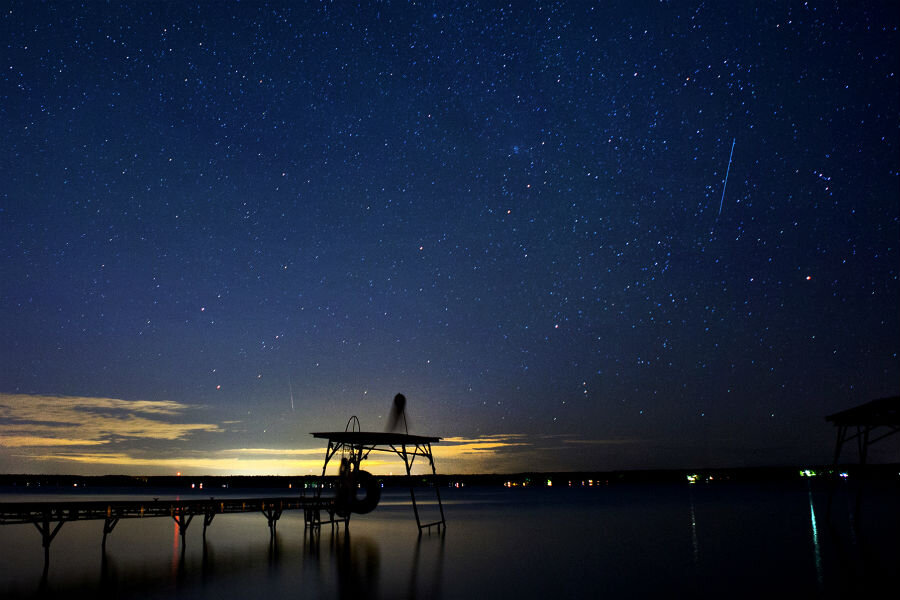The Leonids are coming! Here's how to watch them.
Loading...
Look to the night sky for the remainder of November, and you may catch a glimpse of some comet tail particles burning up in the atmosphere.
The Leonid meteor shower peaks every year in mid-November, as our planet passes through the tail of Comet Tempel–Tuttle. But the show has been on since Nov. 6, according to the International Meteor Organization. The annual autumn shower sees an average of about 20 meteors per hour, categorized as "moderate" by NASA. The space agency advises heading out just before or around midnight local time the night of November 17 (for continental US audiences) and looking east. A waxing-crescent moon will set around midnight, so a dark night sky is anticipated. Meteors will stream with diminishing intensity right up until dawn.
Stay alert, because these meteors are some of the quickest. Leonids zip at 44 miles per second.
Every 33 years, the Leonids pull out all the stops with a torrential downpour, with thousands of meteors streaking the sky per hour.
This isn't one of those years, but the shower's peak is still a much-anticipated event for backyard astronomers, and this year puts Earth at the midpoint to the next anticipated meteor "storm," which is predicted for 2033, with the showers intensifying in the late 2020s. The last storm – which is classified as more than 1,000 meteors per hour – occurred in the late 1990s. In 1966, a historic year for the Leonids, observers in the American Southwest reported about 144,000 meteors per hour as Earth careened right into Tempel–Tuttle's trail of space dust.
Though the shower appears to radiate from the constellation Leo (the lion in the sky), looking toward the star formation will make the streaks of meteors appear shorter, a phenomenon known as foreshortening. Looking away from where the meteors are coming from will allow for a view of the shooting stars that span more of the sky.
Tempel-Tuttle orbits the sun once in 33 years. Each year, Earth intersects with the comet dust, and as the debris hits our atmosphere, the space stuff burns up in a dramatic show of vibrant streaks of light. Tempel-Tuttle – though it produces many meteors – is considered small, according to NASA. Its center is about two and a quarter miles across.
Tempel-Tuttle comes by its hyphen because the comet was discovered twice, and named for both of its founders: once in 1865 and again in 1866 by Ernst Tempel and Horace Tuttle, respectively. But it didn't take the discovery of the comet for those on Earth to see its action. Arabic writings from 902 AD refer to it as ‘Year of Stars,’ and the so-called "Great Meteor Storm of 1833" brought astronomer Denison Olmsted to begin some of the first scientific research into meteor showers. The year 1833 also inspired religious zeal, and the Leonids may have contributed to some of the revival movements at the time in the US, according to Universe Today.
To calculate this year's observing conditions, head to NASA's Fluxtimator.






